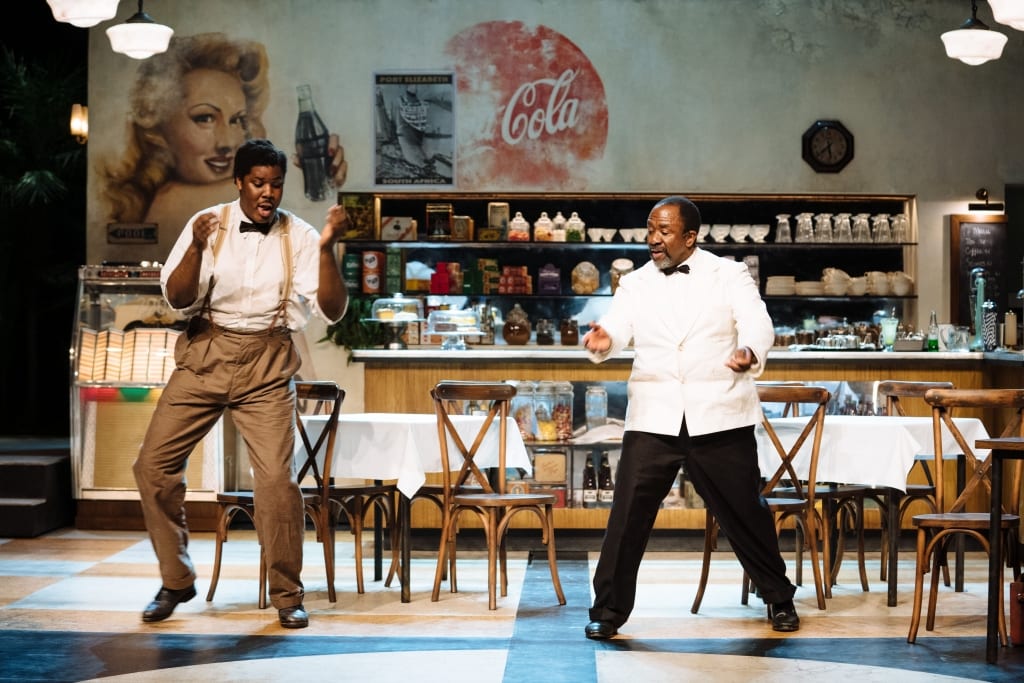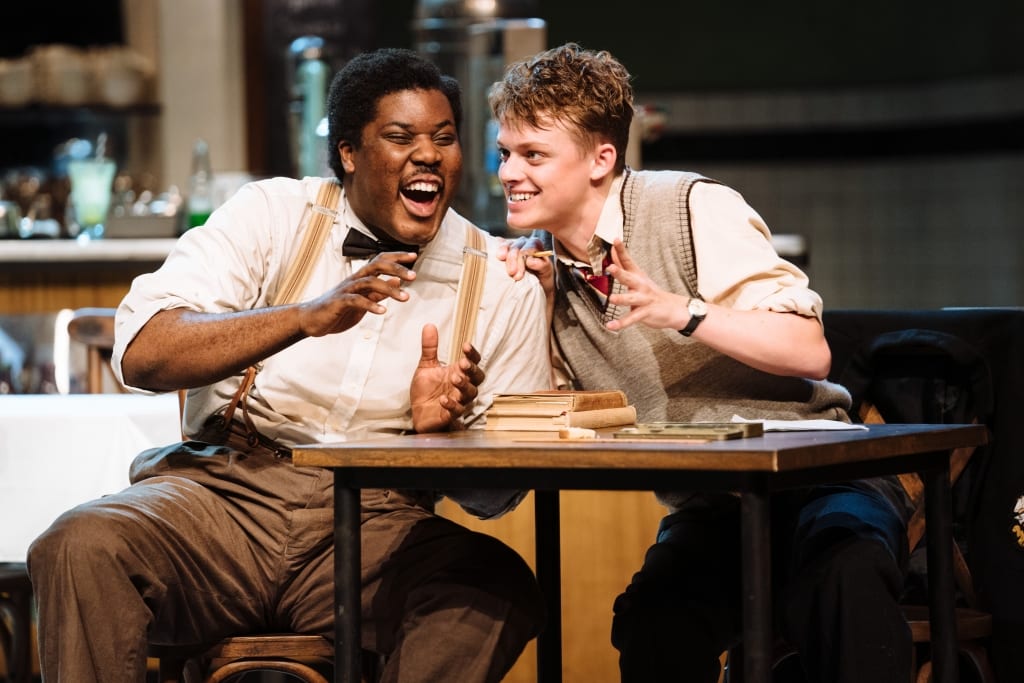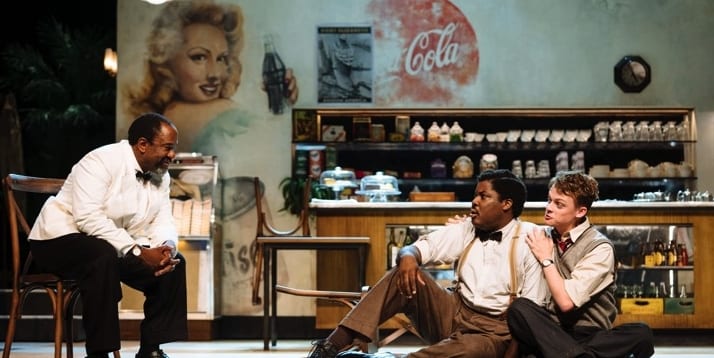‘Master Harold’ and the boys is a play about race relations in South Africa during the 1950s. In the play an insolent white boy grievously insults two black men who work for his family. The play is an exercise in self-flagellation for the playwright Fugard, since he is responsible for a similarly horrible transgression in his youth after he insulted a black servant.
The events of the play take place in the family-owned café – a steady drizzle patters on the glass roof as Sam (Lucian Msamati) and Willie (Hammed Animashaun) busy themselves with the stacking of chairs and mopping of floors. The café’s mural is a visual reminder of the era’s preoccupations with the tastes of colonisers: a smiling Rita Hayworth-type clasps a Coke.
In South Africa at that time, dance became a symbol of civility after native Africans perceived adopting the culture of the invaders as a way to express themselves artistically. Following this trend, Willie intersperses his tidying chores with the practice of a ballroom routine; he regularly stops, starts and grumbles. Sam and Willie are like a Vaudeville duo here: Sam plays off Willie’s hilarious exasperations, launching critiques and creating a small drama out of Willie’s quest to perfect his waltz.

Dance holds a special place in their hearts. Elegant dance is an analogy for political vision in the play: ‘A world without collisions’ is what Sam dreams of; Sam later confesses that he is tired of countries and politicians ‘bumping’ into each other. Willie is preparing to dance in a local championship – the pageantry and beauty he expected to see in this contest fills him with joy, while Willie, on the other hand, still needs some persuading over its value.
The meaningful message of dance is lost on the petulant prince Hally (Anson Boon), who enjoys lecturing the ‘boys’ on great figures from the annals of history, men of magnitude – Boon does a great job at portraying a crass and ultimately obnoxious person who struts around on stage like a self-entitled boy king.
In the second half the frequency of Hally’s sour remarks against Sam and Willie increases; he delights in insulting the primitiveness of African culture as well as the intelligence of his so-called friends. This is when Sam steals the limelight. The bickering turns into the exchange of vile blows as the play reaches its emotional crescendo; Sam delivers some devastatingly impassioned monologues about the pain Hally inflicts with his words and actions.

Caught in the crossfire of Sam and Hally’s fight, Willie stands gobsmacked; Sam’s revelations speeches on the racism he has suffered now and in the past show who the real teacher is in this relationship. Msamati puts in an extremely provocative and nuanced performance as the play’s persecuted hero – he indeed would have been great social activist and a man of magnitude had he possessed the advantages of a white upbringing.
‘Master Harold’ and the boys proves to be one of the most soul-wrenching dramatic depictions of racial tensions during the Apartheid era. The play’s denouement is this wonderfully apt dream sequence where the lights are turned up and the set transforms with dry ice into a glamorous stage. As poignant jazz blares, Sam and Willie practise their waltz together, smiling and gliding through the café, dreaming of a world without collisions.

